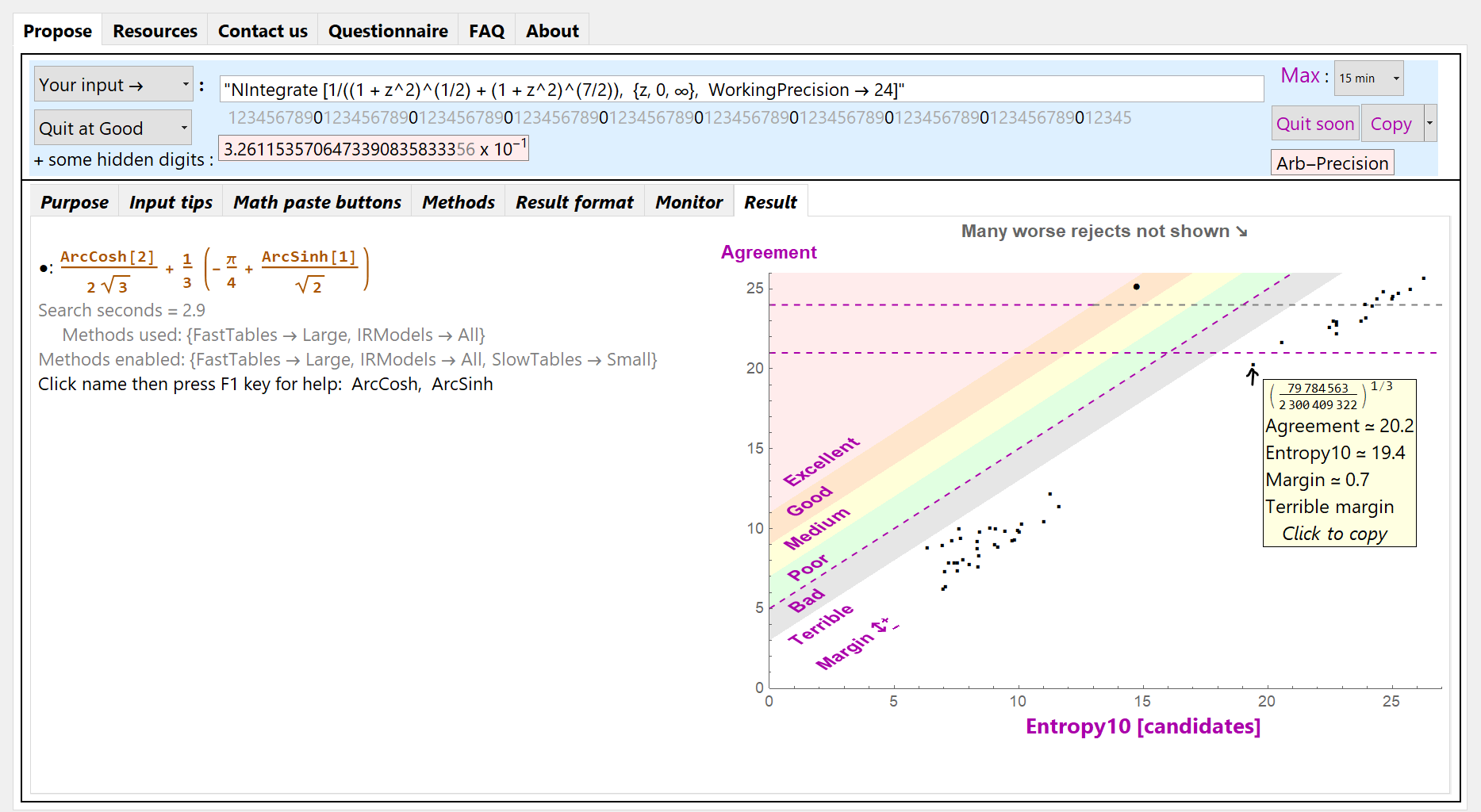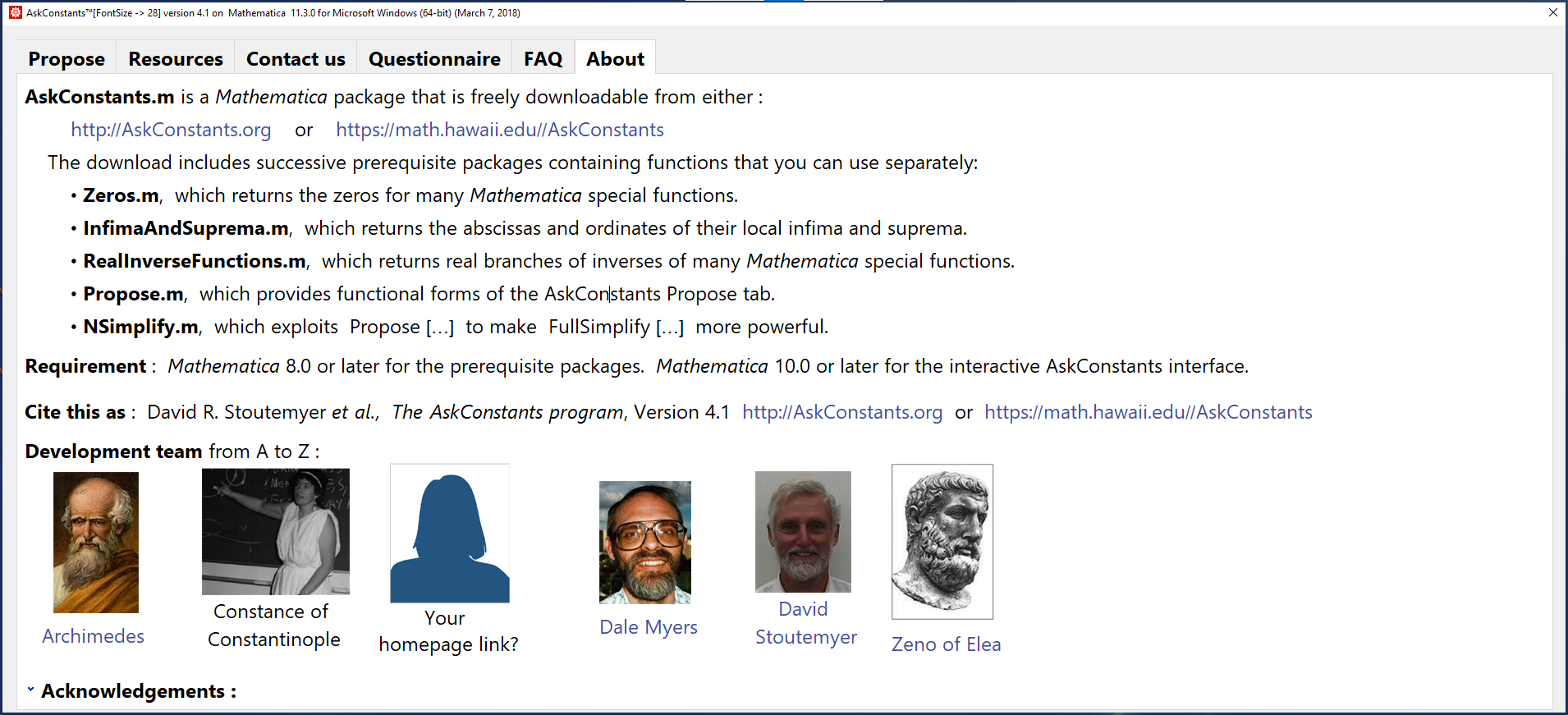You need Mathematica version 10.0 or later to run the AskConstants application.
However you need only version 8.0 or later to run the Propose [] function,
which provides the same functionality with additional options without the scatter plot.
Download Steps:
1. Click one of the following links to download a .zip file.
AskConstants5.0.zip or a previous version AskConstants4.1.zip or AskConstants3.2.zip or AskConstants2.0.zip
2. Unzip it into a new directory preferably named AskConstants5.0, AskConstants4.1, AskConstants3.2 or AskConstants 2.0 appropriately.
3. If that directory automatically ends up in your Downloads directory, then you can optionally move it to
wherever your Mathematica documentation suggests or wherever you normally store Mathematica applications.
One-time Installation Step:
4. In a fresh Mathematica session, use the Mathematica File > Open menu to load from the
unzipped folder the notebook file named
INSTALL.nb
then follow the brief directions there.
Load and Launch Step:
5. In a fresh Mathematica session, open the notebook file named
LOAD_ASKCONSTANTS.nb
then follow the brief instructions there.
- Sometimes neither humans nor computer algebra can determine an exact closed-form expression for a constant that is an integral, an infinite series, or the solution to an equation, but mathematics software can determine a floating-point approximation.
- Do you wonder if that float approaches some expressible closed form as the precision increases?
- You can use the AskConstants package to generate candidates for your exact non-float limit.
- AskConstants can also sometimes dramatically simplify non-float constants.
- Here is a screen shot of AskConstants proposing a promising candidate exact expression that Mathematica 12.1 Integrate [...] cannot determine:

- The right side plots the Agreement versus Entropy10 of the candidate on the left as a large dot, and some of the best rejected candidates are plotted as small dots for comparison, where:
- Agreement is the number of digits of agreement between the float and a candidate non-float.
- Entropy10 is the complexity of the proposed non-float, also measured in equivalent digits.
- Margin is: Agreement - Entropy10
- As illustrated, mousing over a plot dot, dashed line or colored text invokes an explanatory tooltip.
- The diagonal dashed line is the smallest acceptable Margin and the lowest horizontal dashed line is the smallest acceptable Agreement.
- Here is some information about the requirements for running AskConstants and about some other independently useful functions in the download.
